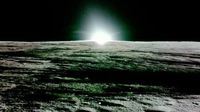This Week in Technology has seen remarkable breakthroughs and exciting innovations that capture the imagination while aiming to improve our future. In one of the most striking developments, Firefly Aerospace's Blue Ghost lunar lander captured the first-ever HD imagery of a sunset on the moon. This unprecedented event marks a significant moment in space exploration and technology. As the Blue Ghost mission wrapped up its operations, it gifted scientists and the public a mesmerizing video showcasing the beauty of a lunar sunset, providing an impactful send-off to the mission as it concluded in the week ending on March 22, 2025.
Another noteworthy story comes from Wired, which reported on Google's frantic efforts to catch up with OpenAI amid the ongoing AI race. According to the report, more than 50 current and former Google employees shared insights about what they referred to as a culture-reshaping period for the company. Employees recounted a two-year saga filled with intense pressure and rapid developments as Google aimed to reclaim its leadership position in artificial intelligence. This comprehensive examination details the struggles inside one of the world’s tech giants as it competes to keep pace with ongoing advancements.
Meanwhile, Boston Dynamics has taken center stage again, showcasing its Atlas robot's agility and advanced capabilities. The latest demonstration revealed the robot performing full-body movements, including cartwheels and even breakdancing. This impressive performance was made possible through reinforcement learning techniques that utilized motion capture data from previous animations. These developments underscore the evolving landscape of robotics and the potential for machines to undertake intricate physical tasks.
In the realm of quantum computing, Microsoft is pressing forward with its ambitious project for topological qubits. However, uncertainty looms over whether they have successfully created functional qubits or merely a concept chip, as pointed out by experts. According to Dina Genkina of IEEE Spectrum, while Microsoft has fabricated eight lithographically produced qubits, the definition of "functional" remains elusive, with the scientific community unconvinced of the project's solid progress.
On the environmental front, Project Juniper in North Las Vegas is starting to make waves. This pioneering carbon removal plant is structured to actively pull CO2 from the atmosphere and store it permanently—an initiative that is both cutting-edge and crucial to mitigate climate change. The integration of carbon capture and storage in one facility marks a notable advancement in the quest for a sustainable future.
Legal discussions have also emerged concerning AI and copyright, with a judge recently remarking on the writing abilities of Data, the iconic android from Star Trek. As Ashley Belanger reported for Ars Technica, while Data might be considered "worse than ChatGPT at writing poetry," his intelligence still draws comparisons to human abilities. This statement hints at a future where legal frameworks may need to address AI authorship issues, particularly if AI reaches levels of sophistication that warrant such considerations.
Scientific inquiry into the universe continues to unfold as researchers announced that dark energy appears to be losing its potency. Charlie Wood from Quanta reported that extensive analysis of data—more than double the previous amount—indicates a concerning trend for this elusive force that drives cosmic expansion. Such findings could revolutionize our understanding of the universe and its fate.
Looking towards the future, 1X is set to test its humanoid robots in hundreds of homes in 2025. These in-home assessments aim to gather extensive data on the Neo Gamma’s operations and interactions, allowing the company to refine its AI and enhance usability in domestic settings. Such trials are anticipated to pave the way for a new generation of robotics that blend seamlessly into everyday life.
Additionally, the Webb Telescope has made a significant breakthrough by capturing the first direct evidence of carbon dioxide on the exoplanet HR 8799, a star system located 130 light-years from Earth. This discovery not only sheds light on the chemical compounds necessary for life but reinforces the notion that other worlds may bear resemblance to our own planetary giants, such as Jupiter and Saturn.
Finally, Nvidia has positioned itself at the forefront of the semiconductor industry with its Blackwell chips, though industry feedback indicates that not all customers are enthusiastic. As the company continues to lead innovation, gaps are emerging between what Nvidia offers and what various customers currently require, raising questions about its long-term market strategy.
In summary, this week’s technological advancements illustrate a fascinating tapestry of innovation and challenge, with each development promising to shape the future in profound ways. As society wrestles with the implications of AI, the environment, and the mysteries of the cosmos, we stand at a pivotal point where science fiction increasingly melds with reality.

